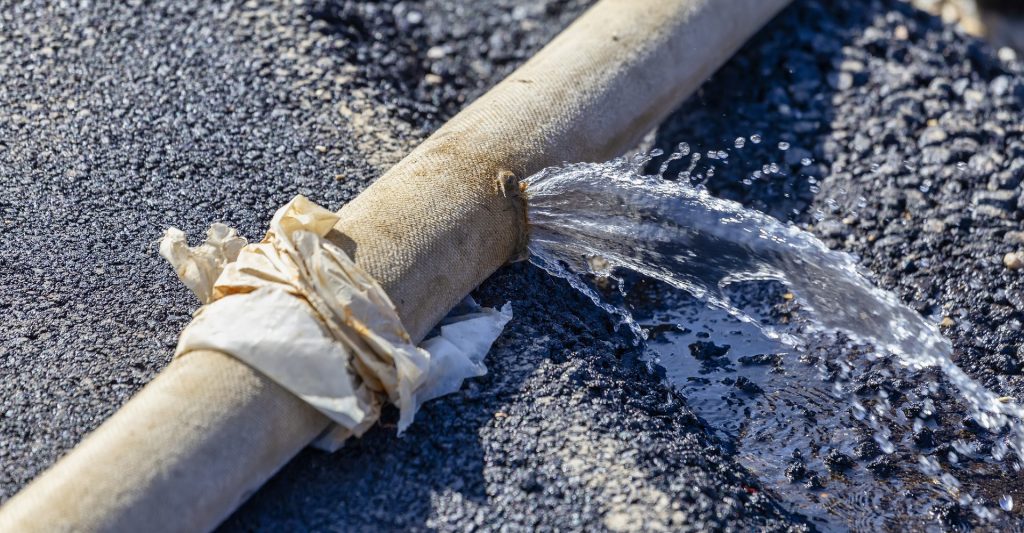Water being a valuable commodity is not to be wasted. It should be conserved because even if the Earth is covered by 75% of water, not all of it can be used. There is a very small percentage of water that is considered potable and ready for consumption. According to the Environmental Protection Agency, there are 90 gallons of water wasted every day because of broken pipelines. To prevent this, how should we spot, and tend to water leaks?
Causes of water leaks
Leaks don’t just happen overnight. It is a result of accumulated damages or mistakes we made that we have missed out on.
- Broken Seals. Seals are seen on appliances. But after a long time they either wear out or they get broken.
- Clogged Lines. Clogs impede the proper flow of water. When not tended to right away can cause a pipe to leak and finally burst.
- Corrosion. Metals weaken when corroded. Have your pipes checked if you see any discoloration or any warping on the pipes.
- Damaged pipe joints. Pipe joints are considered the weakest point in the line system. If you turn the hot water on and hear banging sounds, call your plumber right away to change your pipe system.
- Excess water pressure. While strong pressure might be a delight to use, it can strain the pipes in the long run. Pipes can only withstand a specific level of pressure.
- Intruding tree roots. Trees can be very good for air circulation however, the roots can damage the water pipelines underneath the ground.
- Loose water connectors. Connectors can get loose sometimes. For example, the hose that you use in your washing machine. With constant shaking, the connection can loosen up. Thus, causing leaks.
- Rapid temperature changes. Temperature plays a part in the life of your pipes. It can shrink or expand depending on the weather. This may cause cracks on the pipes and will in turn lead to leaks.
Signs of a water leak
You have to be mindful of your surroundings because clues might be already waving at you. You just have to pay attention to these details and assess your lines’ condition.
Water Puddles.Water puddles are usually seen after the rain. If you encounter a puddle somewhere in your house, be it under a sink or the floor it can be because of a broken pipe. But if you see a puddle of water in your yard or on the sidewalk, you need to watch out for a bursting pipe underneath the ground.
Whistling, Hissing, and Bubbling sounds.
Hearing strange sounds from your pipelines should alarm you that something is going on. Sometimes, damages cannot be seen – they can be heard.
Low Water Pressure.
If your faucet or shower has lost the pressure they were able to deliver at first, it might be a sign of a leak. It can also be because your pipes are clogged.
Water damage to ceilings and walls.
These are signs that the pipes on the upper floor or behind the wall are damaged. Try inspecting your ceilings and walls sometimes.
Mildew and Mold Presence.
Mildew is a white thin coating made up of minute fungal hyphae. It grows on paper, leather, or any place where excessive moisture is found. Small plants may also spring from them. A mold is a group of fungi that grows on organic substances. Forming a cottony appearance, it can pose dangers to humans once ingested or inhaled. They produce toxins that can trigger allergies or even respiratory diseases.
Discolored Water.
Discoloration indicates that there are possible contaminants that came in contact with your water source. It can be dangerous because these contaminants might pose a health risk to you when ingested. Consider calling a plumber when you notice this.
An unexpected spike in the water bill.
If you monitor your monthly consumption, you should know how much water you spend on average. If you notice a sudden increase, you might want to look around for possible water leaks.
Tending to a water leak
Once you have checked one or two or more signs that your pipelines might be suffering from a leak, you can double-check it through these steps.
- Check your water meter. Close all faucets. If the meter is moving and no one is using any water source, there might be a leak in one of your pipes.
- Monitor your monthly water bill. If there are water leaks, they will reflect in your water bill. If your bill consumption is unexpectedly high, you might want to check around your house for possible water leaks.
- Use food color in your toilet tank. After putting the food color into the toilet tank, leave it for 10 minutes. If the dye or food color is still there, then it means there is a leak that allows water to flow from the tank to the drain.
That’s it! You’ve made it to the end of the article! Always be wary of your surroundings. Always lookout for anything unusual around your house. There might be some clues that can spare you some trouble. If you find that the pipe leaks cannot be fixed on your own, you might want to consider contacting a plumber for a thorough investigation and proper solution fitting. Hope this helps! Check out our website for more construction-related articles!
https://talmichplumbingheating.com/here-are-7-signs-of-a-possible-main-water-line-leak-in-your-home/
https://pediaa.com/difference-between-mold-and-fungus/
https://www.collinsdictionary.com/dictionary/english/mildew
https://www.superiorplumbinganddrains.com/5-common-causes-for-water-leaks/




